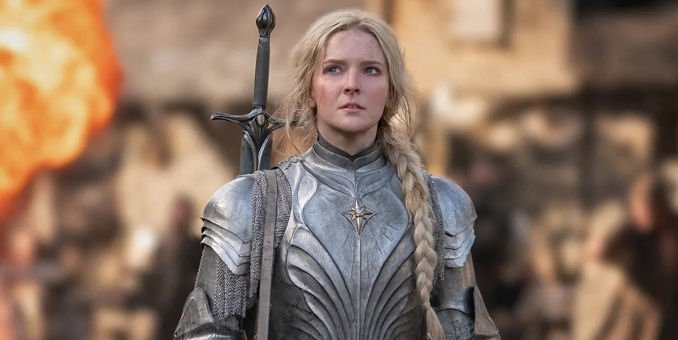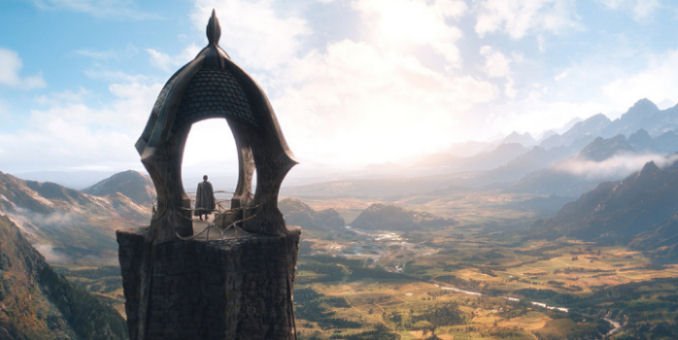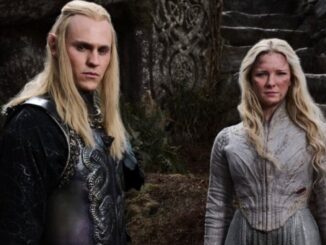
“I had a mind to make a body of more or less connected legend, ranging from the large and cosmogonic, to the level of romantic fairy-story – the larger founded on the lesser in contact with the earth, the lesser drawing splendour from the vast backcloths – which I could dedicate simply to: to England; to my country… I would draw some of the great tales in fullness, and leave many only placed in the scheme, and sketched. The cycles should be linked to a majestic whole, and yet leave scope for other minds and hands, wielding paint and music and drama.”
So wrote J. R. R. Tolkien to his publisher Milton Waldman in 1951. He was talking about his ambitions as a youth when he first started creating the stories of elves and other magical creatures that he ambitiously hoped would serve as a new mythology for England. Over time, those stories became the historical backdrop of his landmark fantasy works The Hobbit and The Lord Of The Rings. And indeed, other minds and hands have taken those stories and adapted them into a number of different media including radio drama, animated movies and television specials and live action films.
And now a new set of minds and hands are taking their turn at telling some of these tales in Amazon Prime’s The Lord Of The Rings: The Rings Of Power. This new series, which is planned to run five seasons or approximately fifty hours in total, is set thousands of years before the events of The Lord Of The Rings and chronicles the story of Middle-Earth’s Second Age. It was a time when the world was recovering from one great war among mighty powers and looking towards a peaceful future. But across Middle-Earth, events are starting to unfold in ways that suggest that peace might be short-lived.
The first two episodes, which premier this Friday on the streaming service, are a delightful return to Middle-Earth, especially for those who are more familiar with it from Peter Jackson’s Lord Of The Rings films. The show very much embraces the epic visual style Jackson employed with vast sweeping vistas and production design that hints at underlying centuries of culture and histories yet to be told. And while Jackson wasn’t involved with this new series, much of the design of things feels familiar to his cinematic interpretations. That is due to both the Jackson films and The Rings Of Power sharing the services and sensibilities of long-time Tolkien illustrator John Howe.
Beyond that scope, the two premier episodes, both written by showrunners Patrick McKay and John D. Payne, does a deft job of introducing viewers to the world of the Second Age of Middle-Earth. A number of characters and locales are introduced, some familiar and some new for general audiences while also balancing character moments with story beats that keep the action flowing. Director J.A. Bayona keeps things moving while still giving us enough time to get to know the major players in this large ensemble cast.
But beyond the quality and entertainment value of the series will always be the question of faithfulness to the source material. Does it keep canon with Tolkien’s broader writings about the history of Middle-Earth? Does it fit into the scope of what Tolkien created without straying beyond the sketched lines?
That is a hard question to answer in the moment. The series is et to run for five hours and approximately fifty hours. So far, only the first two hour-long episodes that premier at the end of this week have been made available to critics for review. That would be like trying to judge Peter Jackson’s three film adaptation of The Lord Of The Rings by only the first twenty minutes of Fellowship Of The Rings. (So basically just barely past Bilbo’s Birthday Party sequence.)
To my mind, as one who first read The Hobbit almost 45 years ago and who regularly revisits much of Tolkien’s Middle-Earth writings as well as a few podcasts dedicated to his work, nothing seems to be out of bounds here so far. Tolkien’s writing about this time in Middle-Earth’s history is broad enough to comfortably fit what occurs in these two episodes, “the paint and music and drama.” There are some elements introduced in these first two episodes that may or may not have been created from whole cloth for the series. But they just may be turn out to be details added to a Tolkien notion that was not very deeply fleshed out previously.
Time will ultimately tell if The Rings Of Power is a tale that compliments Tolkien’s Middle-Earth or not. But hopefully, this new series will take viewers on as adventurous and rewarding a journey as the ones undertaken by the heroes of The Hobbit and The Lord Of The Rings.





